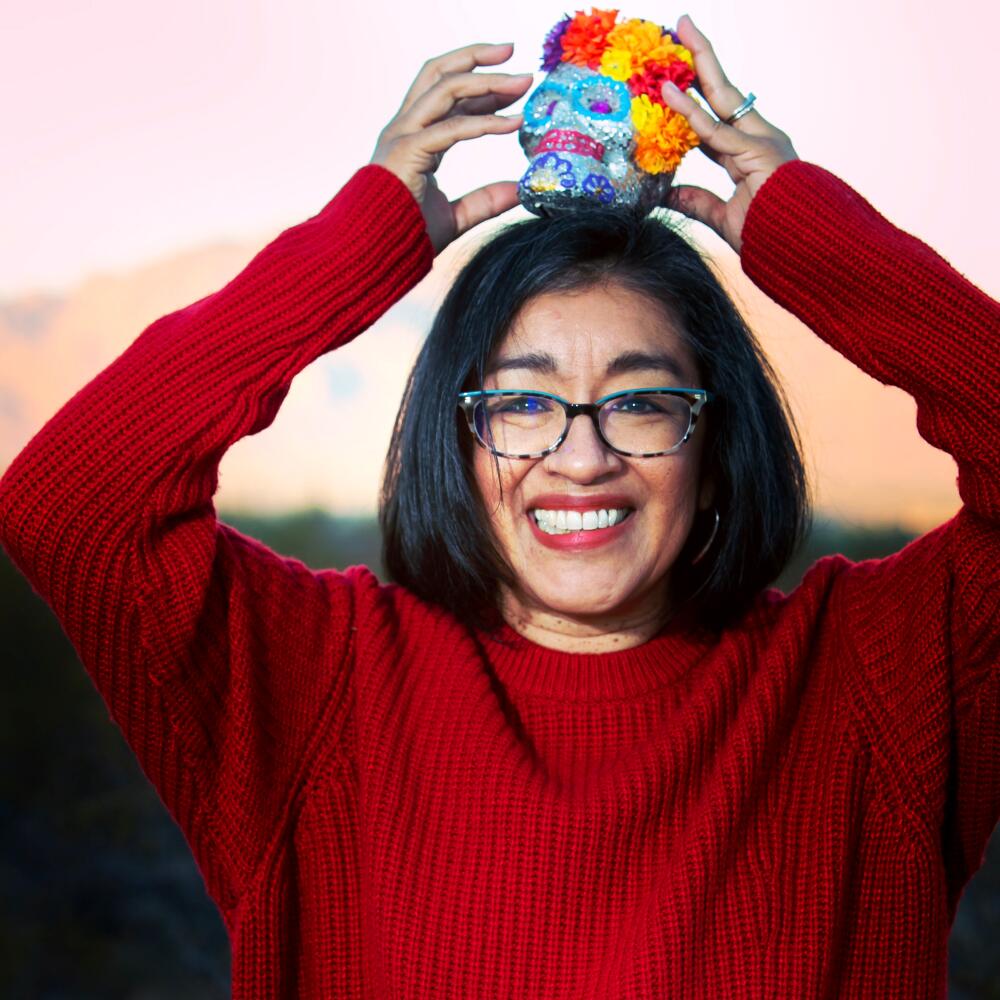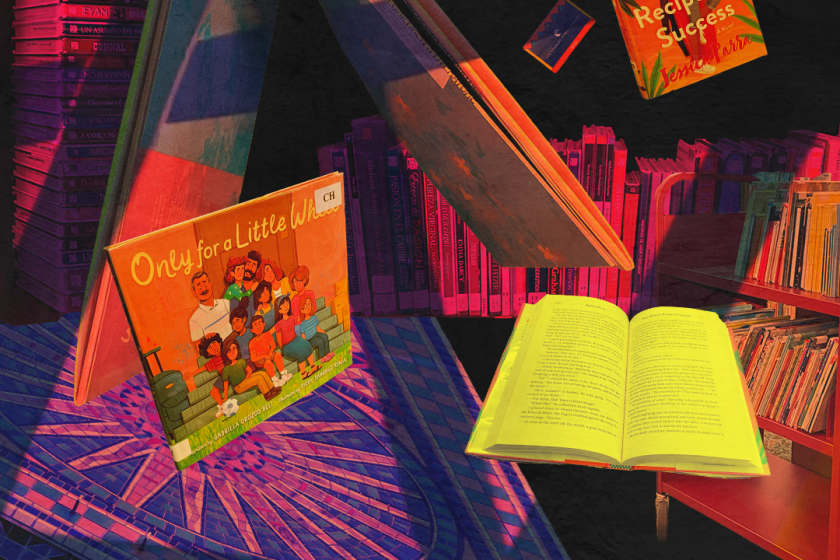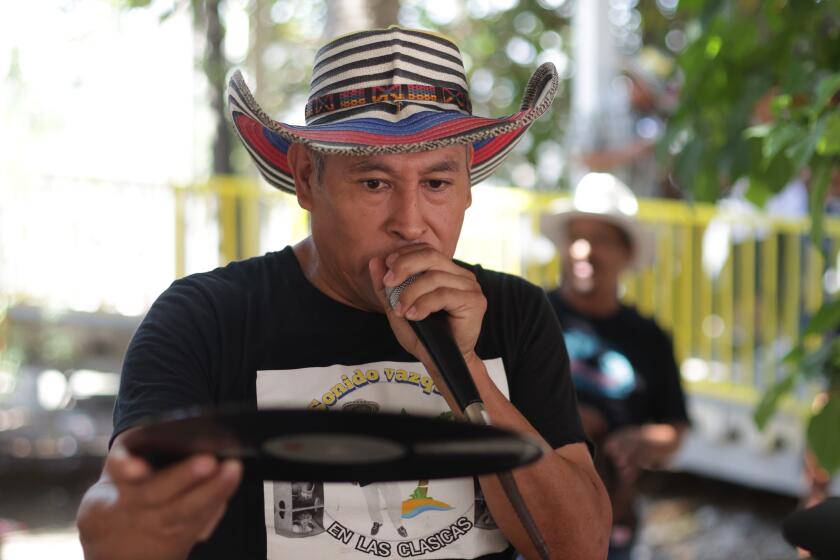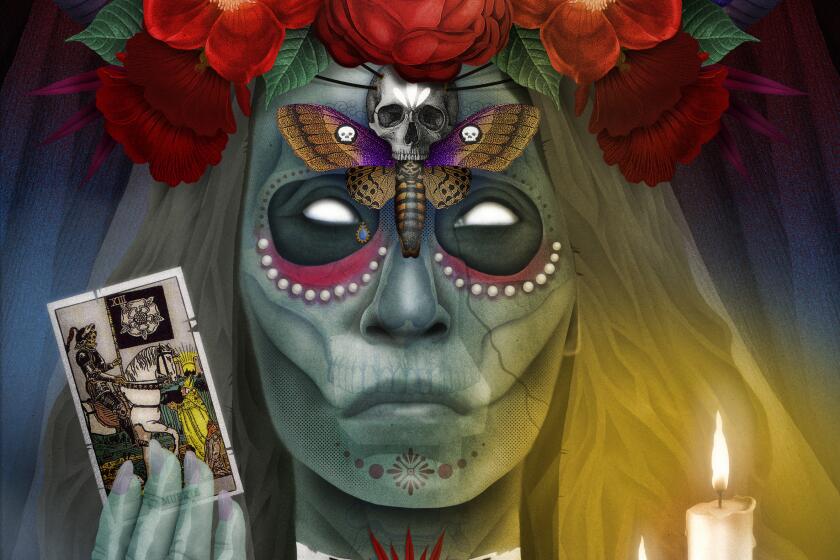
- Share via
Born and raised in East Los Angeles, Estella González received her bachelor’s degree in English from Northwestern University and a master of fine arts in fiction from Cornell University. Over the years, González has racked up numerous writing credits with stories and poetry appearing in literary journals such as Kweli Journal, Huizache, Asteri(x) Journal and Acentos Review.
González’s writing also found itself in several other anthologies including “Daughters of Latin America: An International Anthology of Writing by Latine Women,” “A Night of Screams: Latino Horror Stories,” “What They Leave Behind: A Latinx Anthology,” and “Nasty Women Poets: An Unapologetic Anthology of Subversive Verse.”
In 2021, Arte Público Press published González’s short-story collection, “Chola Salvation,” which earned praise from Kirkus, Booklist and Publishers Weekly. But perhaps the best commendation came from literary superstar Helena María Viramontes who observed: “With its bars, churches, hair salons and its neighbors, this collection is East Los in its beautiful, aggrieved, celebratory finest.”
Latino authors across Los Angeles are taking advantage of the resources offered by local libraries to jump-start their careers.
Luckily, we only had to wait two more years for González’s next book, this time a novel titled “Huizache Women,” also published by Arte Público Press. As with her other fiction, Mexicanas and Chicanas are the stars of this narrative which follows the lives of three generations of women from Mexico to El Paso to Los Angeles.
We’re introduced to the matriarch of this family, Merced, as she begins a hardscrabble life in an abusive family, eventually escaping to a loveless marriage and subsequent lovers. Merced’s unhealthy emotional attachment to a handsome man compels her to uproot her three daughters — Alma, Norma and Suki — to embark on a formidable migration to the United States to reunite with her lover. The novel weaves alternating chapters of these women’s lives along with that of Merced’s granddaughter, Lucha.
The result is an absorbing, often funny, heartbreaking story that neither sugarcoats nor romanticizes the lives of these women.
González took time from her home in Tucson to answer a few questions about “Huizache Women.” Her responses have been edited for length and clarity.
In a sweeping reversal, the Pulitzer Prize Board will accept submissions from non-U.S. citizens but the change will not go into effect until 2025.
What motivated you to write a novel as your second book?
I had already begun the novel in graduate school about 14 years ago in the form of a short story titled “Angry Blood.” It was originally the first chapter of my thesis. Initially, there were only two daughters, Alma and Norma, but then one day Suki, the youngest, showed up. She became the stabilizing force in the family, the one who could withstand the generational trauma that seemed to overwhelm her grandmother and older sisters.
When I graduated, the novel was a little over 100 pages — more of a novella. I set it aside and wrote other stories. Some of those stories became new chapters for the book while others became part of my story collection, “Chola Salvation.” When Arte Público Press accepted “Chola” for publication, I mentioned my novel-in-progress to gauge their interest. The moment they gave me the go-ahead, I pulled the novel together.
“Huizache Women” follows the lives of three generations of women from early 20th century Mexico to El Paso a few decades later, and finally contemporary Los Angeles. How did you research each of the time periods, and what was your ultimate goal in creating a narrative that spans a century?
My high school and middle school yearbooks came in handy, especially when writing Lucha’s chapters, which mainly take place in the 1980s. In 2007, I traveled to Juárez, El Chuco, Chihuahua and the small town where my maternal relatives originated. I took un chingo de fotos with my digital camera of the streets, the stores, repurposed movie theaters, fancy hotels, etc. We also visited the small towns between Juárez and Chihuahua. I revisited neighborhoods that I had frequented when I was younger like Boyle Heights, especially First Street.
Of course, I searched the internet, online libraries and old newspapers. I also watched classic Mexican movies like “Enamorada” and “Santa.” Actually, I read the novel “Santa” by Federico Gamboa on which the original film is based. “From Coveralls to Zoot Suits: The Lives of Mexican American Women on the World War II Home Front” by Elizabeth R. Escobedo was also a helpful resource when it came to knowing more about pachucas, the predecessors of the modern-day cholas. For background information on early 20th century Mexico, specifically Chihuahua and Juárez, I read “Ringside Seat to a Revolution: An Underground Cultural History of El Paso and Juárez” by David Dorado Romo.
Ultimately, I wanted the narrative to reveal how generations of Chicanas and Mexicanas find their way to joy in the aftermath of trauma and in the shadow of oppression. Some find it faster than others. All the characters, even Lucha, live with some kind of threat hanging over them — whether it’s gender violence, homophobia or the constant threat of poverty. But humor, community and endurance shield their souls.
The barrios of La Indepe used to be the margins of the industrial city, but now they are encircled by urban development. Given the government’s initiatives, often presented as progress, these barrios are the last obstacle standing in the government’s way.
Could you talk about how you mapped out the lives of these women, and what served as the basis for each of their personalities, travails and triumphs?
I mapped their lives like a medieval romance or an epic tale like Chretien de Troye’s “Perceval,” “The Story of the Grail” or Beroul’s “The Romance of Tristan.” Trauma and oppression would be the “vermillion knights” the characters face on their quests for their holy grail: a life of hope, joy and freedom.
Love would be the theme but not strictly in the romantic sense. As in Tristan, love could make the heroes sick and self-destructive or it could heal them. It depends on their interpretation of that love.
The goal was for the girls to develop into women who aspire to a healthy love and respect for themselves and others. Of course, that means struggling with trauma. All the characters want some form of love — romantic, familial or self-love/respect.
Merced desires the love she first sees in “Santa” — passionate and all-consuming. Then, when she first meets Leandro, she imagines life with him will be glamorous and fulfilling. Of course, it’s not. Merced struggles with the sexual and emotional abuse she suffered as a girl and as a young woman. This abuse transforms her into a cruel maternal force. Her youngest daughter, Suki, converts her own suffering into self-acceptance and pride. Alma and Norma endure the most pain at the hands of their mother but eventually find acceptance within themselves. Lucha, the granddaughter, finds the self-love she needs to continue on her professional trajectory as a broadcast journalist, documenting not only the travails of her family but also her community.
Whether La Llorona is held up as a form of resistance against oppression, owning her power or reclaiming the monstrous bruja within, the narratives of the wailing woman have endured for centuries, reimagined into a radical icon.
How would you describe your writing process for this novel? Were there pivotal moments in your creative process along the way to completing it?
This novel has been a quest with its share of obstacles along the way, including adjunct jobs that consumed a lot of time and emotional energy. I wrote this novel in spurts within a 14-year span, piecing fragments or complete chapters while tracking the characters’ trajectories. I had to reread stories I hadn’t seen in years.
The changes in some characters, especially that of Suki, who was more passive at the start, surprised me. The male characters, like Donaciano, also became more prominent. As a result, the novel morphed throughout the years. That previously mentioned trip to Chihuahua proved an effective catalyst for my book. After I moved back to L.A. after grad school, I was able to revisit the barrios of my childhood where many of my characters lived, worked and played. Shout out to La Bufadora and El Diamante on First Street!
I was also involved with the Pasadena Writing Project, which further invigorated my novel writing. Several chapters debuted at Pasadena readings, including “Amor Eterno.” When Kweli Journal published my stand-alone chapter “Angry Blood” and nominated it for the Pushcart Prize, it lit a fire under me but it was the publication of “Chola Salvation” that pushed me to finally finish the book.
Daniel A. Olivas is playwright, fiction writer, poet and book critic. His books include the 2022 story collection, How to Date a Flying Mexican, which was released this year in a Spanish-language edition under the title Cómo Salir con un Mexicano Volador. His forthcoming novel is Chicano Frankenstein.
More to Read
The Latinx experience chronicled
Get the Latinx Files newsletter for stories that capture the multitudes within our communities.
You may occasionally receive promotional content from the Los Angeles Times.










